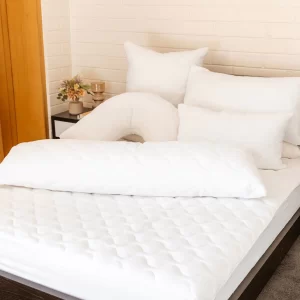Living with Incontinence: Strategies for a Confident and Comfortable Life
Incontinence is a common condition that affects millions of people worldwide. Despite its prevalence, it can be a challenging and often embarrassing issue to address. However, it’s essential to remember that you’re not alone in your journey. With the right information, support, and strategies, you can manage incontinence and continue to lead a fulfilling and confident life. In this blog, we’ll explore what incontinence is, its causes, types, and most importantly, practical tips and solutions to help you or your loved one navigate this condition with grace and dignity.
Understanding Incontinence
Incontinence is the involuntary loss of bladder or bowel control, resulting in the unintentional release of urine or feces. It can affect people of all ages, although it’s more common among older adults. It is crucial to understand that incontinence is not a disease in itself but rather a symptom of an underlying issue. Common causes include:
- Aging: As we age, the muscles that control the bladder and bowel may weaken, leading to incontinence.
- Medical Conditions: Conditions like diabetes, multiple sclerosis, Parkinson’s disease, and prostate issues can contribute to incontinence.
- Pregnancy and Childbirth: Women may experience temporary incontinence during and after pregnancy due to pressure on the bladder and changes in hormones.
- Medications: Some medications can cause side effects that affect bladder control.
- Urinary Tract Infections (UTIs): UTIs can irritate the bladder and cause temporary incontinence.
Types of Incontinence
There are several types of incontinence, each with its unique characteristics:
- Stress Incontinence: This occurs when physical activities like sneezing, coughing, laughing, or lifting put pressure on the bladder, leading to urine leakage.
- Urge Incontinence: Also known as overactive bladder, this type involves a sudden, strong urge to urinate, often resulting in leakage before reaching the bathroom.
- Overflow Incontinence: This happens when the bladder doesn’t empty completely, causing it to overflow and leak urine.
- Functional Incontinence: In this case, physical or cognitive impairments, such as mobility issues or dementia, prevent an individual from reaching the toilet in time.
- Mixed Incontinence: Some people may experience a combination of two or more of the above types.
- View Continence Website Information Link: Continence Foundation Of Australia.
Managing Incontinence
Living with incontinence requires a multi-faceted approach involving lifestyle changes, medical interventions, and emotional support. Here are some strategies to help manage incontinence effectively:
- Seek Medical Advice: The first step is to consult a healthcare professional who can diagnose the type and underlying cause of your incontinence. They can then recommend appropriate treatments or interventions.
- Pelvic Floor Exercises: For stress incontinence, pelvic floor exercises (Kegels) can strengthen the muscles that control urine flow, reducing leakage.
- Medications: Depending on the type of incontinence, your doctor may prescribe medications to relax the bladder or reduce its sensitivity.
- Lifestyle Modifications: Make dietary changes, such as reducing caffeine and alcohol intake, as these can irritate the bladder. Maintain a healthy weight and stay hydrated, but avoid excessive fluid intake before bedtime.
- Scheduled Bathroom Breaks: Establish a regular bathroom schedule, even if you don’t feel the urge to go. This can help prevent accidents.
- Use of Incontinence Products: Incontinence products like adult diapers, pads, or protective underwear can provide confidence and peace of mind while managing incontinence.
- Modify Your Environment: If you have functional incontinence, make your home more accessible by installing handrails, grab bars, and raised toilet seats.
- Emotional Support: Don’t underestimate the emotional toll incontinence can take. Seek support from friends, family, or support groups. Sharing your experiences and feelings can be therapeutic.
Conclusion
Incontinence is a challenging condition, but it’s important to remember that it can be managed effectively with the right strategies and support. By seeking medical advice, making lifestyle changes, and using appropriate products, you can regain your confidence and live a fulfilling life despite incontinence. Remember, you are not alone in this journey, and there is help available to help you navigate it with grace and dignity.
If you would like any further information please Contact one of our friendly team at Cover and Protect Mon-Fri on 02 931 66654 (Sydney, NSW) or mob: 0408 113 089 (7 Days) or drop us an email at sales@coverandprotect.com.au will get back to you ASAP.


